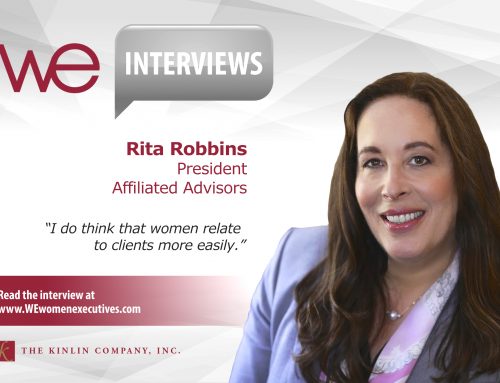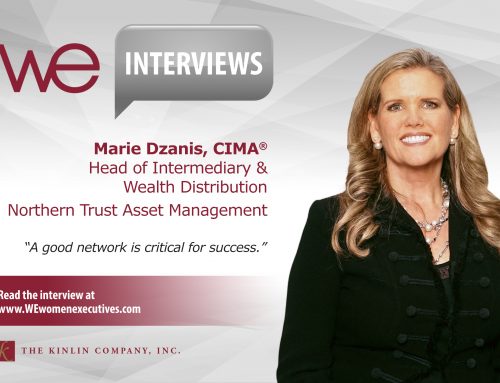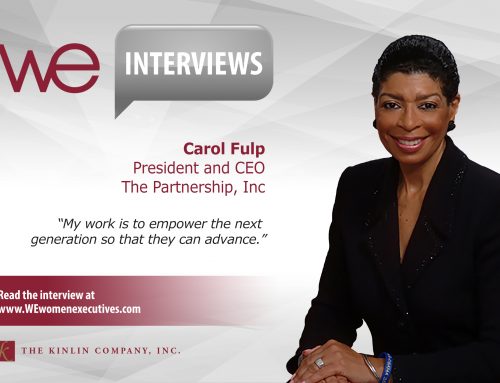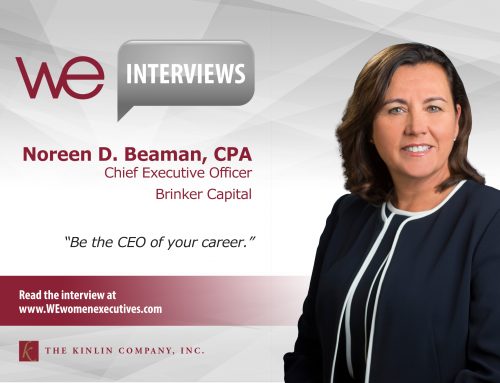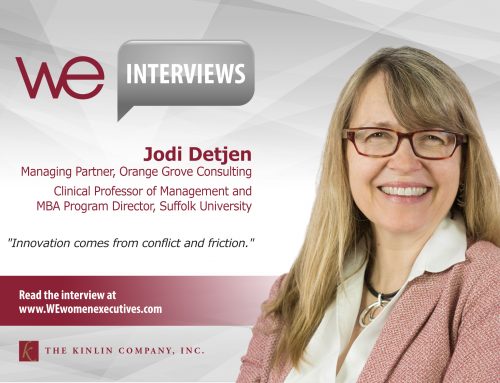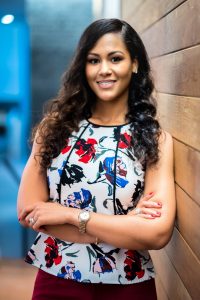 Rianka R. Dorsainvil, CFP®
Rianka R. Dorsainvil, CFP®
Founder & President, Your Greatest Contribution
Creator & Host, 2050 TrailBlazers podcast
Rianka R. Dorsainvil, CFP® is the founder and president of Your Greatest Contribution, commonly known as ‘YGC,’ a boutique financial planning firm launched in November, 2015 in response to a need Dorsainvil recognized in the asset management space: comprehensive financial planning for individuals in their late 20s, 30s and 40s. She serves as lead advisor for the company, aided by a part-time executive assistant and a social media and marketing coordinator, and runs a consulting firm through which she hosts a podcast entitled ‘2050 TrailBlazers.’
Dorsainvil is clearly a financial services professional in step with the Millennial ethos, and I was eager to learn more about the impetus for YGC and her quest to nurture greater diversity within the financial planning community.
Recognizing a need
I began with a deep dive into the vision behind YGC. In launching your firm, you targeted young professionals at the lower end of the investable asset spectrum. What motivated you to focus on this demographic, and what are some of the biggest challenges you’ve encountered in getting your business off the ground?
“I launched YGC a few years ago after working for a couple of other boutique financial planning firms. To be a client of mine at those firms, you had to have at least one million dollars of investable assets, and I don’t know too many people with that amount of money, especially at the age and stage we are in our career. I do, however, know a ton of thriving young professionals who earn over $100,000, and they were saying to me, ‘Listen, Rianka, I’m an expert in my field, but I’m not an expert in personal finances. I’ve hit the ceiling of what I know and it’s time for me to hire a professional – can I work with you?’ These were my college peers and my husband’s colleagues, and I had to keep telling them, ‘I’m sorry, I can’t bring you on as a client, but give me a call and I’ll spend 30 minutes with you and help you as much as I can.’
“That started happening more and more and suddenly, a lightbulb went off and I realized, ‘There’s a void. Here are thriving young professionals who are willing to pay for this type of advice, but because they don’t meet the fee structure that’s set up in traditional financial planning firms, we’re saying that we’re not willing to work with them.’ It started to hurt my heart. These young professionals are saying, ‘I want to make smart decisions with my finances. I want to make sure that I break the cycle of being illiterate with personal finances and make sure I’m taking the right steps,’ and we were responding, ‘No, we’re not going to help you.’
“So, the long and the short of it is, I left a very stable situation – great salary and benefits – and started from zero, with no assets under management. I got my first client within the first month of starting my firm, which was all the confirmation I needed that this service was something that young professionals were seeking.
“What makes my firm different from the traditional firms is that I charge a retainer, a decision that’s an outgrowth of understanding where my clients are. Clients who are seeking my type of advice and guidance don’t have $1 million, so it doesn’t make sense for me to charge them based on the amount of assets under management. They pay on a quarterly basis, and when they cross the threshold of $400,000 of investable assets, we switch to a percentage of AUM, because then it makes sense for me to charge on their assets rather than on retainer.”
How do you determine a retainer prior to the time that they reach $400,000 in assets? Are you charging a percentage of what they have invested with you?
“No. A client can come to me with $50,000 or nothing. What I’m concerned with is whether it makes sense for a client to work with me. Before I speak with a client, I request that a questionnaire be completed. That way, I know if I’m a good fit for the individual’s needs before I take a call. And my minimum annual retainer is $4,000.
“I come from a comprehensive financial planning background, and what some of the traditional financial planning firms are trying to do – particularly with professionals in their 30s – is offer a ‘Happy Meal’ version of financial planning. The problem with that is that just because they’re young, doesn’t mean that their situation is not complex. If anything, their situation is more complex than a retiree’s. The only thing you have to worry about with retirees is social security: are they withdrawing too much from their portfolio and do they need help with long-term care. With young professionals, we have to worry about everything: retirement planning, risk management, and education planning for those with children. A lot goes into working with young professionals, and I want my retainer to reflect the effort I’m putting in on their behalf.”
Providing an education
Having gotten a good sense of the impetus behind Dorsainvil’s founding of YGC, I was eager to gain a greater understanding of her clients. What types of investments do Millennials favor? What are they interested in, and what factors do they think are most critical?
“A lot of millennials or clients that start with me have no idea how to start investing. Their first brush with investing is their retirement plan, their 401K. That’s where they start to say, ‘Okay, my money is going somewhere, but what does it mean that my money is invested in the market?’
“Among the challenges that I face in growing my business or working with my clientele is education, but I love it. In my past life, I was probably a teacher, because I love teaching people about personal finances. Investments are only a small part of what we talk about. Generally, when people hear financial planner or financial advisor, they automatically think of investing. But for young professionals, investing is only a portion of what we discuss. It’s a large part, but it’s not the only thing.
“They rely on me to explain what stocks are, what bonds are, what an ETF is, what a mutual fund is, etc. I give them this foundation because I want them to feel empowered and to understand what they are investing in.”
And what about their attitude towards investing? Are they optimistic? Are they risk takers or more conservative?
“This is a really good question because the Millennials who are in their early thirties witnessed the market correction in 2008 and 2009. A lot of them were just entering the workforce and having a very hard time getting a job, so every dollar they earned counted a little bit more than before. And when they saw what the downturn did to their parents’ and grandparents’ investments, they became very protective of their funds and very shy about investing.
“For example, I have clients who just started investing in the market. They had about $20,000 sitting in cash, so last summer, I created a portfolio for them last summer. But every time I reached out to them about investing in the market, they always had a reason to delay. Finally, in December, I decided to take a different approach towards investing and gave them a little history lesson regarding the stock market. I explained that it goes up and down, but over the course of time in which their money would be invested, history demonstrates that the market has always gone up. By showing them this historical data, I was able to take away the ‘recency effect,’ which helped them.
“In January, the market started off well, and then in February it started to go down. They had already started to invest, and they were nervous. They said, ‘This is money that we’ve worked hard for and we just don’t want to lose it.’ My job was to educate them on the idea that any type of money you put into the market shouldn’t be needed for a minimum of five years. If you need this cash within the next three to five years, it needs to stay out of the market, because there’s no guarantee that it’s going to go up and I can’t guarantee that you won’t lose it.”
Moving the needle
With a sense of YGC’s mission and client base in hand, I turned my attention to Dorsainvil’s educational initiatives. I know you’re committed to educating more women and minorities about the possibility of having a career in financial planning. Are you seeing any significant change in the number of individuals in these demographics gravitating towards the financial sector?
“I am seeing a lot of campaigns bring awareness to a career in financial planning, such as the CFP Board Center for Financial Planning that launched in 2015. They have an entire arm dedicated to bringing more women and minorities into financial planning. The Financial Planning Association has a scholarship to bring women and minorities into financial planning, too. So, yes, I’ve seen growing awareness surrounding financial planning, but I think only time will tell if the efforts gain traction.
I will say for me personally, there are quite a few women and minorities who reach out to me to ask questions about a career in financial planning. You don’t see a lot of women of color appearing in magazines in the financial planning world or owning their own firms, so when they come across someone like myself or my mentor Lazetta Rainey Braxton, they say, ‘Wow! Can I have a successful career in financial planning?’ And I tell them absolutely – this career is made for women. We have this misconception that financial planning is all about numbers, and although part of it is about understanding the numbers, there’s also a lot of relationship building, and who better than women to build relationships?
“I think the challenge of finding women to fill positions goes beyond financial planning – I think it’s an inherent part of the workforce itself. The working population here in America was never built for women. Once we realize that, we can start to introduce true change in many sectors, including the financial service industry.
For example, I recently spoke with someone who’s writing about how to be successful in male-dominated professions. She told me she was touring a very old building and when she asked where the restrooms were, she was told the twelfth floor. She was on the sixth. When she asked about the lack of women’s restrooms, she was told that the building was built during the industrial revolution and the secretaries worked on the twelfth floor, so that’s where the bathrooms are. In other words, problems of inequality extend to buildings themselves – there was a time when women weren’t even thought about at the time the building was built. Now, firms understand they need things like a nursing room for new mothers. Women need to blaze a trail for others to follow.”
Encouraging a dialogue
Dorsainvil’s trailblazing comment offered a perfect segue into my next question regarding her podcast ‘2050 TrailBlazers.’ I understand that you created this podcast to address the lack of diversity in the financial planning and financial services industries. Can you tell a bit about the program and share the names of a few of the industry experts that you have or will be featuring?
“Over the years, I’ve been asked to address concerns surrounding diversity and inclusion and the lack thereof in the financial service industry. As awareness of financial planning continues to spread and we attract more ethnically and racially diverse talent, we need to work to retain and support these rising professionals. I created ‘2050 TrailBlazers’ so that discussion about bringing more ethnically diverse talent into the profession is not just a fleeting one that happens once at a conference when everyone’s having a ‘feel good’ moment. We need to continue the conversation year-round, and with the podcast, we’re able to do that.
“Season one has eight episodes. The first one lays out the state of the union of the financial planning world and features Cy Richardson, the vice president of the National Urban League and chair of the newly formed Diversity Advisory Group of the CFP Board Center for Financial Planning. Another episode features Lazetta Rainey Braxton, a trailblazer in her own right, who has been in the financial planning profession for over 20 years and has owned her own firm for almost a decade now. She has spearheaded many diversity initiatives, and I feel like I’m picking up the torch from her. A third episode features Dr. Nandita Das, a CFP and CFA who’s a professor at Delaware State University, an historically black college and university (HBCU). Dr. Das helped create the CFP Board program there. In other words, the podcast is a platform for learning, so that if someone at another HBCU wants to start a CFP Board program, they can learn more about the support available, how to get students in the pipeline, that sort of thing. We need this information, because right now, there are more certified financial planners over the age of 70 than there are under the age of 30. So, if our profession is to continue to grow and thrive, we need more of us.”
Sharing your knowledge
Dorsainvil’s comments about nurturing the next generation led me to wonder about the support she had in her professional journey. Have you had mentors or sponsors along the way? And if so, who were they and how did they help you?
“Yes, I have absolutely had support. You know how they say it takes a village to raise a child? It also takes a village to build a company, and though you may see me standing here as the proud owner and founder of YGC, it took a lot of people to give me the confidence to do this. I was 28 when I started my firm, and a little insecure, but my mentors gave me a boost.
“Lazetta Rainey Braxton, for one, has been phenomenal and probably my most influential mentor. I met her through Eleanor Blayney, one of the first women owners of Harris SBSB, a large Registered Investment Advisor (RIA) firm in McLean, Virginia, and another true sponsor to me. Eleanor has literally taken my hand and introduced me to people who have been influential in my career and my life. Don Lord, a senior financial advisor at one of the first firms that I worked for, is another valued mentor. He has remained involved in my career development.”
How were your mentoring and sponsoring relationships structured? Were they formally implemented through your jobs or did they come about organically?
“All of my mentor and sponsor relationships happened organically, and they always seemed to come about at a time when I was always at a fork in the road. It was as if the universe brought this person to me to be that light on the path.
Lazetta has been a particularly important influence. She’s amazing and it’s funny because she calls me her mentor. She makes it clear that you don’t have to be older to be someone’s mentor, you must simply be willing to share your knowledge, and I’m an open book. We have different skill sets and putting us together in this mentor/mentee share relationship has been great. From a technology standpoint, I’ve built my entire practice virtually. I researched a lot of technology and found efficient ways to do things from a process standpoint, and I share those with her. A mentor/mentee relationship is a two-way street – even as a mentee, you have something to give.”
Taking the initiative
My last question for Dorsainvil was a bit more personal. You’re involved in a great deal of committee and volunteer work. What’s the motivating force behind these activities, especially considering your heavy work schedule?
“I have always been the type of person that helps if I can. I’ve never been the type of person to look to my left and my right and say, ‘Well, who’s going to do something about it?’ I look to myself and say, ‘What are you going to do about it?’ That’s how my podcast came about. I was thinking, ‘All right, somebody needs to do something, we can’t just have these conversations once a year. These are great conversations, but no one can hear. And if no one hears, then change can’t happen. So how can we put this out there in such a way that people will want to listen?’ That’s how YGC came about as well. There were young professionals saying, ‘I need help, who is going to help me?’ So, instead of forcing these clients to wait to meet us where we are in the traditional financial planning world, I met them where they are.”

